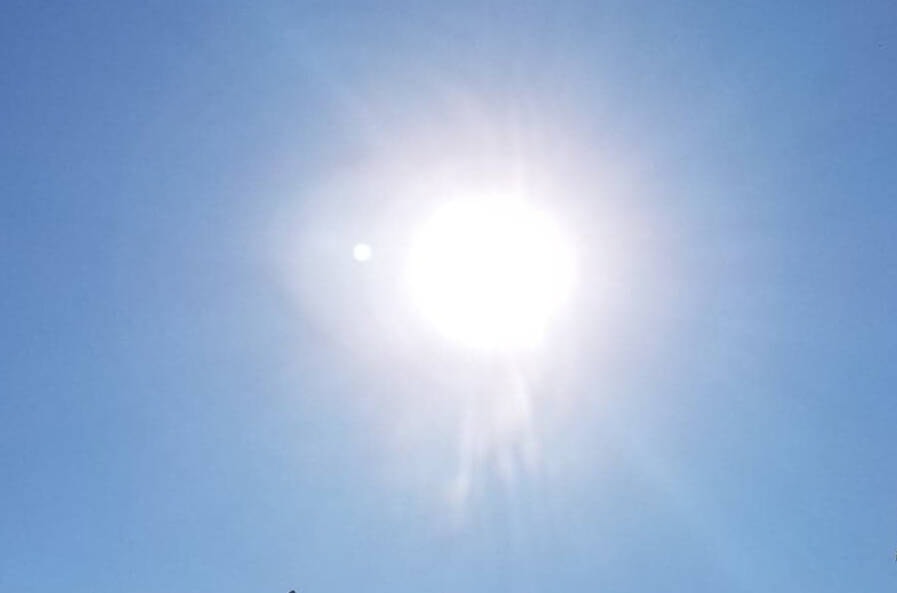With temperatures forecast to hit the mid 30s next week, both City of Chilliwack and a provincial MLA are offering some resources and ideas to prepare for extreme heat.
The combination of high heat and high humidity can be very dangerous, deadly even as evidenced by last summer’s unprecedented prolonged heat that caused hundreds of fatalities in B.C. and more than 20 deaths in Chilliwack.
People most at risk during these weather conditions include: The elderly, and/or those with chronic illnesses (such as diabetes, heart and respiratory conditions) or people unable to move or change position by themselves, and even infants and preschool children.
Chilliwack-Kent MLA Kelli Paddon tweeted a reminder about the local resources available on heat preparedness, and City of Chilliwack has a page with tips on how to avoid heat-related illness inside and out.
The temperatures are rising in #ChilliwackKent Please be aware of local resources in @City_Chilliwack and @KentBC1 and check out the Extreme Heat Preparedness Guide for tips https://t.co/EWN73kIGDB https://t.co/k0E6gtD00Q
— Kelli Paddon MLA (@kellipaddon) July 20, 2022
Also at risk along with the elderly and health compromised, are those who exercise vigorously or are involved in strenuous outdoor work for prolonged periods, people taking certain medications, and the unhoused or marginally housed persons.
Experts say it’s important to text, call, or video chat to check on those you know who may be more vulnerable to the heat to make sure they are staying cool and drinking enough water.
A provincial resource is the ‘Prepared BC’s Extreme Heat Preparedness Guide’ document at gov.bc.ca.
Here are the tips from the City of Chilliwack page on how to avoid heat-related illness:
Outdoors
Seek cooler, breezier areas when outdoors, such as large parks near to water with lots of trees, while maintaining physical distancing.
Avoid crowded spaces and maintain a 2-meter distance from others as much as possible.
Take it slow with outdoor activities – rest and relax often if you feel fatigued.
Avoid going out in the blazing sun or heat when possible. If you must go outside, stay in the shade as much as possible and plan to go out early in the morning or evening when it is cooler and smog levels may not be as high as in the afternoon. Wear a hat.
Stay hydrated – drink water regularly, even more than you think you need.
Never leave children or pets alone in a parked car. Temperatures can rise rapidly in enclosed vehicles, becoming much hotter than the outdoor temperature.
Indoors
Make your home as comfortable as possible.
Close blinds and shutters during the daytime and open them at night. Open your windows at night to let in cooler air. If you have children in your home, make sure you’ve taken precautions to prevent falls from windows and balconies.
If you have air conditioning, use it to take the edge off indoor heat - but don’t over-cool and remember that circulation of fresh air is important for reducing COVID-19 risk.
If you don’t have air-conditioning, spend time in the coolest room in your home and use a fan. Blowing a fan across a pan of ice water can create a cool breeze.
Cool showers and misting yourself and your clothing with cool water will help keep you from overheating.
Drink lots of water and natural fruit juices even if you don’t feel very thirsty. Avoid alcoholic beverages, coffee and cola.
Keep lights off or turned down low.
Avoid heavy meals and using your oven.
Consult your doctor or pharmacist regarding the side effects of your medications.
RELATED: Last summer saw record-breaking heat
RELATED: Cooling centres opened in heat dome event
Do you have a story idea to share? Email:
jfeinberg@theprogress.com
@CHWKjourno
Like us on Facebook and follow us on Twitter.
